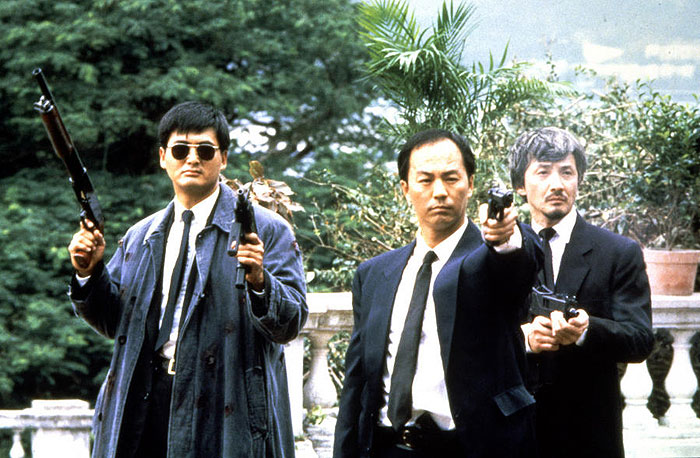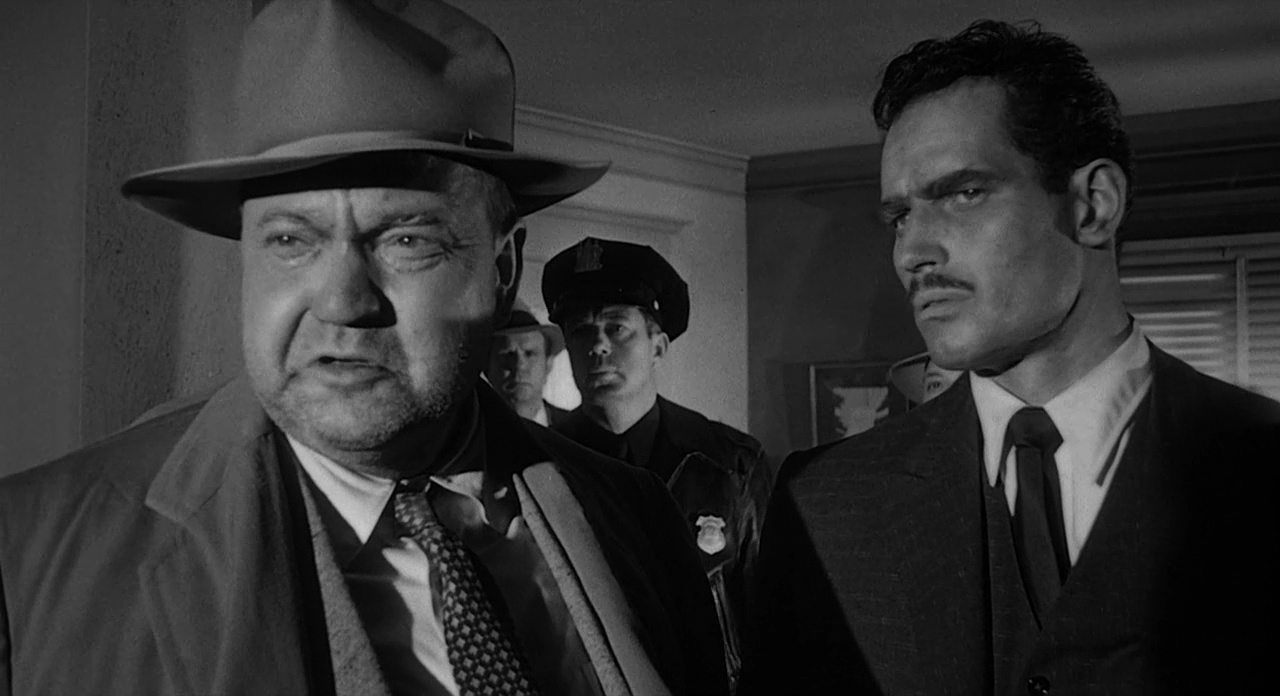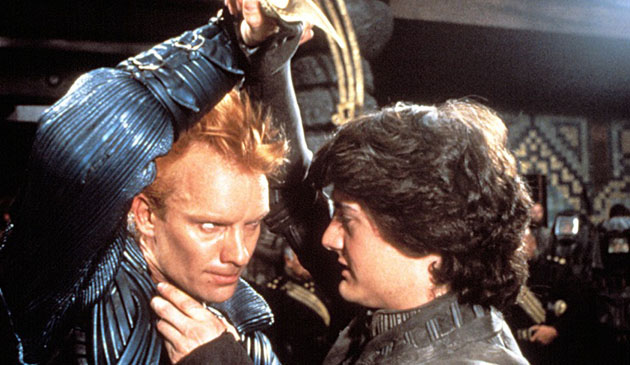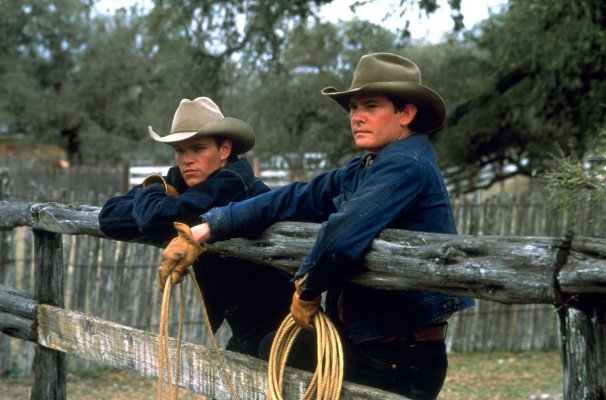10. A Better Tomorrow II (1987)
The Movie: A Better Tomorrow(1986) was the highest-grossing film in China at the time of its release, wildly popular, it inspired Chinese teenagers to don dusters and sunglasses to emulate the look of the lead character Mark Gor, played by Chow Yun-Fat, also launching the careers of Fat and director John Woo.
Naturally, a sequel followed to cash in on the popularity of the first film.
Chow Yun-Fat’s character Mark, who died in the original, was resurrected via his twin brother Ken (also played by Chow Yun-Fat), a restaurant owner in NYC and all around badass. The story is simple: Ken teams up with Kit (Leslie Cheung), Sung Tse-Ho (Lung Ti) and their old friend Lung Si (Dean Shek) to avenge his daughter’s murder at the hands of the Triads.
What Happened: Unfortunately, Woo and producer Hark Tsui could not agree on which character the film should focus on, so both men created their own versions of the film. Still unable to agree, they sent off their individual versions to Cinema City editors who edited the footage with no frame of reference and no supervision from either man, thus resulting in the mess which exists today. Woo has all but disowned the film, except for its spectacularly violent climax.
Sadly, despite a single screening of Woo’s Director’s Cut for film executives in Hong Kong, there is only the one version.
Best Version: The messy theatrical version (105 min.). Check it out for the finale.
9. Brazil (1985)
The Movie: Terry Gilliam’s frightening and hilarious vision of a future ruled by nonsensical bureaucracy and plagued by terrorism.
Brazil (1985)follows Sam Lowry searching for the woman of his dreams, literally. He is mistakenly identified as a member of a terrorist organization and must go on the lamb, forcing him to stop going through the motions and live outside the norms of his twisted society.
What Happened: Somewhere along the line Universal chairman Sid Sheinberg decided that real theme of the film was “Love Conquers All” and that it should end happily. Gilliam disagreed feeling that the happy ending should turn out to be a fantasy in the mind of the now essentially brain dead Sam. Sheinberg delayed the release of the film indefinitely.
Eventually, Gilliam took out a full-page ad in Variety asking simply when his film would be released, and held private screenings of his version of the film at USC which were attended by several L.A. film critics who awarded it best picture of the year, forcing Universal into releasing the film as Gilliam intended.
Best Version: The “Final Cut” (142 min.) presents Gilliam’s absurdist sci-fi fantasy at its best.
8. Touch of Evil (1958)
The Movie: Orson Welles gets screwed by the studio yet again.
Or as they called it in theaters, touch of Evil. The film begins with one of the greatest long takes ever, following a car with a bomb planted in the trunk, crossing over the border from Mexico to the United States, and ending with the bomb’s inevitable explosion.
Mexican Narcotics Agent Miguel “Mike” Vargas (Charlton Heston) sets out to solve the bombing. He is hindered by corrupt Capt. Quinlan (Orson Welles), who plants dynamite on Vargas’ prime suspect to secure a conviction, while Uncle Joe Grandi plots to kidnap Vargas’ wife (Janet Leigh).
*(Welles was originally cast only has an actor in the film, but Heston requested that he direct the film and Universal obliged, providing Welles was only paid his acting salary.)
What Happened: The studio thought they could improve Welles’ first cut of the film. They shot additional scenes and re-edited it, prompting Welles to draft a 58-page memo expressing his editorial wishes. Unfortunately, not only did the studio ignore Welles’ memo, they botched their own version and dumped the film at the bottom of a double-feature, abandoning it.
Three versions of the film exist: the original theatrical release (93 min.), a preview version discovered in the Universal archives in 1976 (108 min.) and the Restored Version (111 min.) which incorporates all available footage, following the 58-page memo in attempts to achieve Welles’ original vision.
Best Version: The Restored Version.
7. Dune (1984)
The Movie: An interesting failure, Dune might be the oddest in the twisted canon of director David Lynch (Blue Velvet, Mulholland Dr.). An adaptation of the sci-fi novel by Frank Herbert, a towering work begetting a towering production spanning eight soundstages in Mexico City with a cast and crew of 1,000+.
In Dune the universe depends on the spice melange to travel through space. The feuding houses of Harkonnen and Atreides fight for control of planet Arrakis, the source of the spice. Young Paul Atreides (Kyle MacLachlan) fulfills the prophecy of the Fremen, the native people of Arrakis, as the Messiah who will free them from the colonial rule of other planets.
What Happened: The film feels rushed and incomplete, due mostly to the arbitrary time limit of 2 hours and 17 minutes that the producers requested, the exact length of the finished film. However, by Lynch’s own admission, he never made the film his own, constantly compromising in order to work harmoniously with De Laurentiis and other collaborators with more mainstream leanings. The largest production in scope of Lynch’s career, surely he was daunted and overwhelmed, not to mention trying streamline the intricate detail of the 412-page novel. Lynch takes full credit for this one.
Best Version: The one and only 2 hour and 17 minute theatrical cut. It’s definitely incomplete, but worth seeing in the context of Lynch’s career.
6. All the Pretty Horses (2000)
The Movie: Billy Bob Thornton burst onto the scene like a Southern Gothic Orson Welles, writing, directing and starring in Sling Blade (1996). He followed that up with an adaptation of Cormac McCarthy’s novel All The Pretty Horsesabout a forbidden romance between cowboy John Grady Cole (Matt Damon) and Alejandra Villarreal (Penelope Cruz), the daughter of an aristocrat.
What Happened: Thornton’s original cut ran 3 hours and 40 minutes and was regarded by some as a masterpiece and by others as intolerable. Harvey Weinstein forced him to cut an hour out of it, possibly as revenge for Thornton’s refusal to cut Sling Blade, and then hired Marty Stuart to compose a new score, junking the original score by Daniel Lanois.
The theatrical version runs 116 minutes and is the only version in existence. Despite attempts to create a director’s cut, an agreement could not be reached with Lanois to use his original score. It appears as though one will never be released.
Best Version: Probably lost somewhere in Billy Bob Thornton’s basement.




